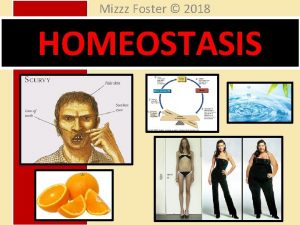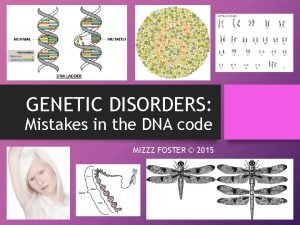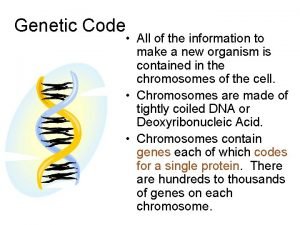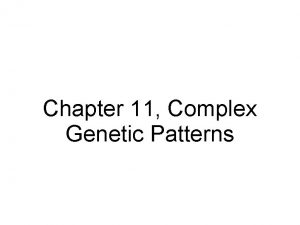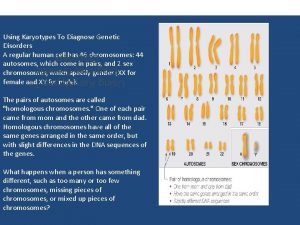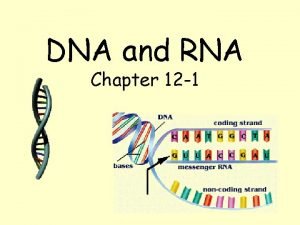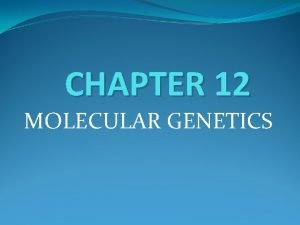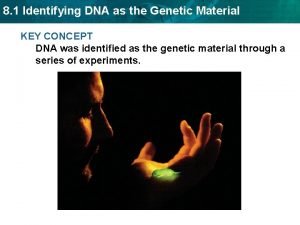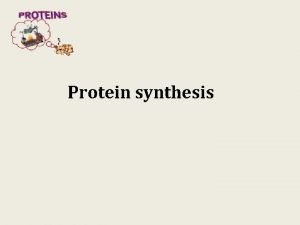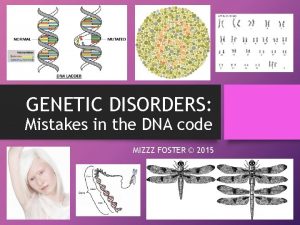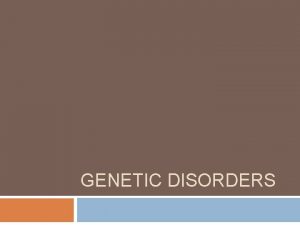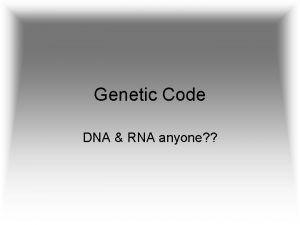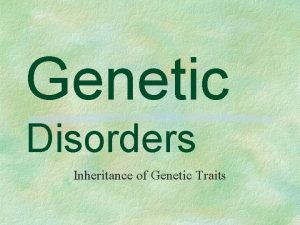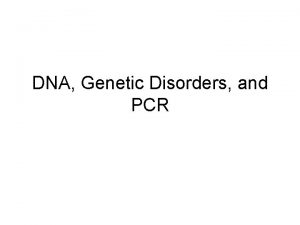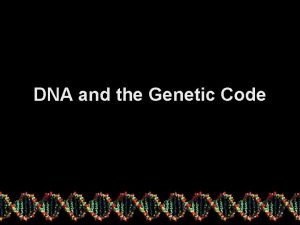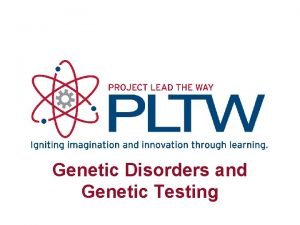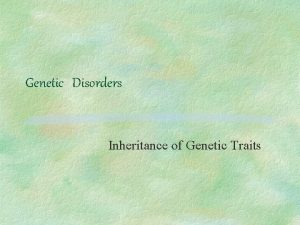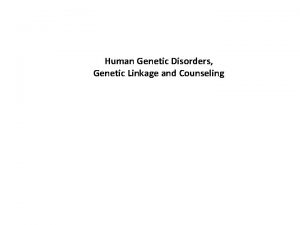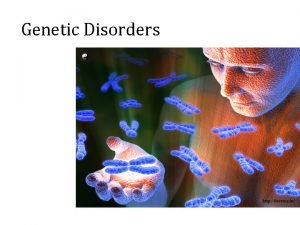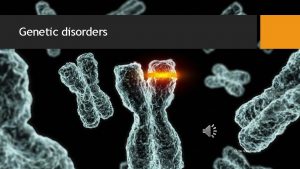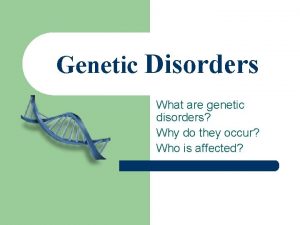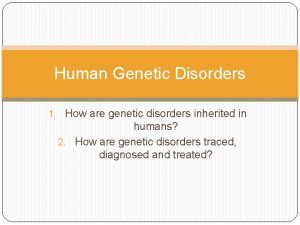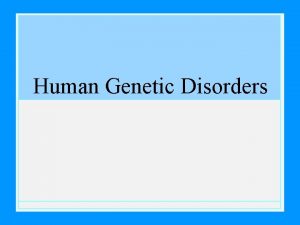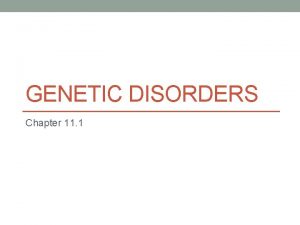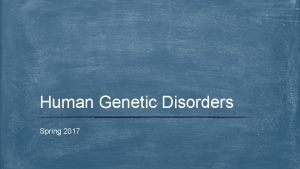GENETIC DISORDERS Mistakes in the DNA code MIZZZ























- Slides: 23

GENETIC DISORDERS: Mistakes in the DNA code MIZZZ FOSTER © 2015

Quick review of Genes and Proteins • Genes are a sequence of DNA nucleotides which code (codons) for the building of a polypeptide chain at the ribosome which will be folded into a protein inside the rough endoplasmic reticulum. • Proteins are long chains of amino acids (polypeptide chains) which are folded into a specific 3 -D shape and have a specific function. They are the foundation of an organism’s physical and behavioral characteristics.

What are genetic mutations? • When a “mistake” is made in the DNA sequence or chromosome which causes the wrong amino acid or group of wrong amino acids to be placed into a polypeptide chain. • This results a different or altered protein. • Mutation can be GOOD or BAD. • Bad mutations lead to an unhealthy organism which are unfit for their environment. • Good mutations can create a more fit and stable organism and drive evolution.

Mutations • Most mutations either occur within the DNA strand or to the chromosomes. • Types of mutations are: Deletion, Insertion, Duplication, Inversion • These mutations go unnoticed when they benefit a species, but are noticed when they cause disorders and syndromes.

Deletion • A single nucleotide, group of nucleotides, piece of chromosome or whole chromosome is deleted or missing from the organism’s genome.

Insertion • A single nucleotide, group of nucleotides is added into a DNA strand. A piece of chromosome or whole chromosome is added into an organism’s existing chromosomes.

Duplication • A single nucleotide, group of nucleotides is duplicated within a DNA strand. A piece of chromosome or whole chromosome is duplicated in an organism’s genome.

Inversion • A single nucleotide, group of nucleotides is flipped and reinserted into a DNA strand. A piece of chromosome is flipped and reinserted into an organism’s existing chromosome.

CHROMOSOMAL MUTATIONS • Mutations which affect the entire chromosome by extra copies, deletions, parts missing or translocated. Whole groups of proteins are affected. • Karyotypes are a photograph of a person’s chromosomes. Karyotypes are used to diagnose chromosomal mutations. • Normal karyotypes should only have two chromosomes at each number. • A person receives on set of chromosomes 1 -23 from mom and one from dad.

Nondisjunction Two copies of a chromosome do not properly segregate during meiosis and end up in the same gamete leaving another gamete without the chromosome. Nondisjunction causes polysomy and monosomy.

Chromosomal Mutation: POLYSOMY • More than 2 copies of a single chromosome resulting in excess proteins being synthesized.

Downs Syndrome: Trisomy 21 • Three copies of chromosome 21. A person affected has mental retardation, developmental delays, shorter stature, and some organ dysfunction. Modern medicine has helped to increase life span. • Downs Syndrome can be the result of gametes having an extra chromosome 21 or the early embryonic cells had a case of nondisjunction.

Klinefelter’s Syndrome • Nondisjunction of the sex chromosomes resulting in three sex chromosomes instead of only one. There are two types: XXX or XXY. • XXX can not be diagnosed without a karyotype and show no symptoms. • XXY results in a sterile male. • XXY is the one referred to as Klinefelter’s Syndrome.

Klinefelter’s Syndrome • The XXY male is sterile and can not father children. • They exhibit language impairment, gynecomastia, breast cancer, arthritis, varicose veins, pulmonary disease, and osteoporosis. • They have male and female characteristics, but do have male genitalia.

Chromosomal Mutation: MONOSOMY • Monosomy is when only one copy of a specific chromosome is present in an organism resulting in a lack of protein.

Turner’s Syndrome • Monosomy of the sex chromosomes. • Only found in females, results with only one X chromosomes. • Women with Turner’s syndrome are sterile, short stature, no ovarian development, no puberty, webbed neck, thyroid and skeletal problems. No menstruation.

Translocation • A piece of one chromosome breaks off and joins to another chromosome. These mutations are difficult to diagnose because often they have no detrimental affect to the organism.

Sex-Linked Genetic Disorder • Mutations found on the sex chromosomes or affecting the sex chromosomes as we saw in Kleinfelter’s and Turner’s syndromes. • Most sex-linked genetic disorders are found on the X chromosome and passed from mother to son. • Women can sometimes have the disorder if they have a carrier mother and an affected father.

Sex-linked genetic disorder: HEMOPHILIA • Sex-linked genetic disorder on the X chromosome which affects blood clotting factors. • It is mostly found in males but can show up in females. • People with hemophilia are at a high risk of bleeding to death. • Hemophilia caused the death of many males in Queen Victoria’s family line. • Women can have hemophilia if it is on both X chromosomes.

Sex-linked genetic disorder: COLORBLINDNESS • Sex-linked gene found on the X which interferes with a person’s ability to see color. • Some people have blindness in pairs of colors and few can see no color. • Mostly found in males and inherited from their mothers. • Women can be colorblind if they carry the gene on both x chromosomes.

Sex-linked genetic disorder: COLORBLINDNESS • Colorblind test

Sex-linked genetic disorder: Y-chromosome diseases Lack of sperm production • This mutation happens on the chromosome in an individual. They may not have children as a result. Retinitis Pigmentosa • A chronic hereditary eye disease characterized by black pigmentation and gradual degeneration of the retina.

ALBINISM • Genetic disorder where the enzymes needed to produce melanin (pigment protein) are nonfunctioning resulting in an organism which is absent of color. • Albinism affects ALL organisms: Protists, plants, animals and fungus.
 Mizzz foster
Mizzz foster Chromosomal mutation
Chromosomal mutation Order of bases in dna
Order of bases in dna Chorionic villus
Chorionic villus Is baldness dominant or recessive
Is baldness dominant or recessive Using karyotypes to diagnose genetic disorders
Using karyotypes to diagnose genetic disorders Gene flow vs genetic drift
Gene flow vs genetic drift Genetic programming vs genetic algorithm
Genetic programming vs genetic algorithm Genetic programming vs genetic algorithm
Genetic programming vs genetic algorithm Gene flow vs genetic drift
Gene flow vs genetic drift Gene flow vs genetic drift
Gene flow vs genetic drift Chapter 12 section 1 dna the genetic material
Chapter 12 section 1 dna the genetic material Chapter 12 section 1 dna the genetic material
Chapter 12 section 1 dna the genetic material Chapter 12 molecular genetics
Chapter 12 molecular genetics On and off
On and off Chapter 12 section 1 dna the genetic material
Chapter 12 section 1 dna the genetic material Section 1 identifying dna as the genetic material
Section 1 identifying dna as the genetic material Busceral
Busceral Replication
Replication Bioflix activity dna replication lagging strand synthesis
Bioflix activity dna replication lagging strand synthesis Coding dna and non coding dna
Coding dna and non coding dna Enzyme involved in dna replication
Enzyme involved in dna replication Chapter 11 dna and genes
Chapter 11 dna and genes Genetic code table
Genetic code table
